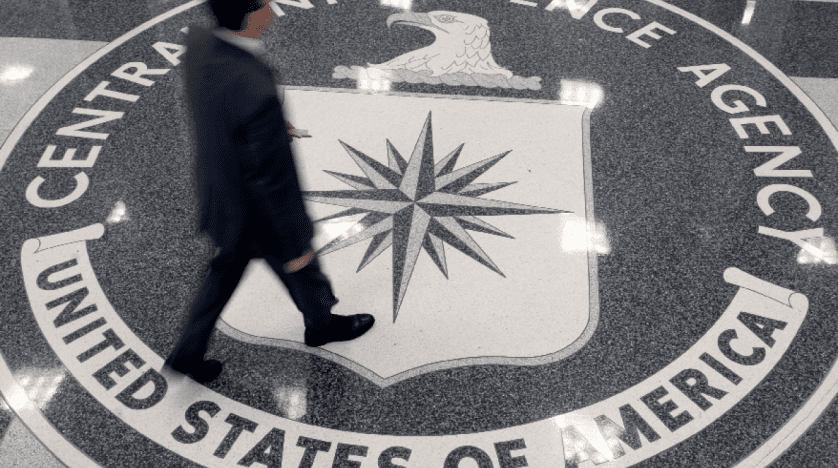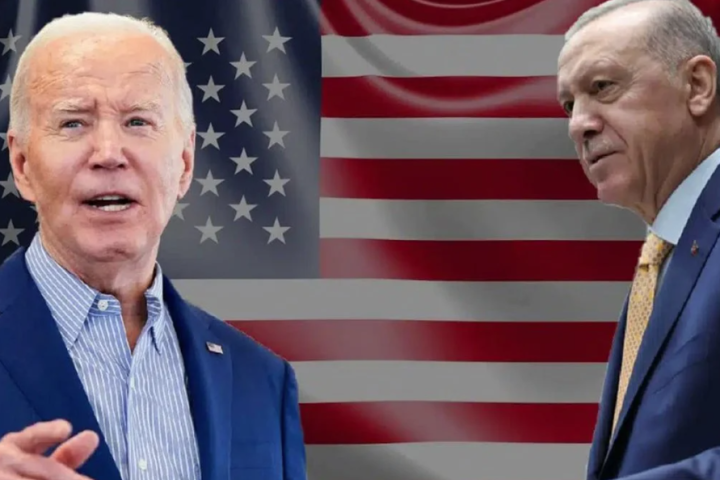The government reserves the right to keep sensitive information secret indefinitely.
For researchers studying the secret history of the United States government, the night of December 31 marks an important time. Every year on that night, hundreds of millions of documents are declassified. In 1995, US President Bill Clinton issued a presidential decree requiring the release of historically important documents of 25 years or more to the public as a matter of transparency. Of course, federal security agencies can decide which documents should not be released for various reasons. It is possible that some sensitive information will remain secret ‘forever’. So why does the US government disclose its secrets? Is the process transparent or is there limited sharing?
- Solar stock prices are rising. Can They still buy them?
- In light of Pelosi’s potential trip to Taiwan, the PLA conducts fake nighttime drills
- US carrier strike group might be approaching Taiwan, according to the monitor
Decades of secrecy are being lifted from the veil of secrecy.
In 1995, 2003 and 2006, US presidents issued ‘decrees’ declassifying billions of documents, including some sensitive information from federal agencies, including intelligence and national security agencies, the State Department and the White House. Many of the declassified documents ‘relating to espionage activities, secret weapons, some critical diplomatic contacts and important presidential decisions’ were blacked out. In 2006, a massive trove of documents was released and over a billion pages were declassified. Some of the documents were classified as ‘confidential’, some as ‘secret’ and some as ‘top secret’. Thus, the ‘veils of mystery’ about the ‘Cuban missile crisis’, the ‘Vietnam war’ and ‘Soviet spy networks in the US’ were relatively lifted. Among those released were 270 million documents from the Federal Bureau of Investigation (FBI). Researchers and journalists worked for years to analyze these documents. These documents reveal a crucial period of the Cold War, how nuclear weapons were fought, and US policies in the Middle East and Latin America. The role of the Central Intelligence Agency (CIA) in Iran during the Jimmy Carter era, the Camp David Accords and the processes in the Egypt-Israel ‘peace treaty’ could be interpreted more accurately in the light of these documents.
Understanding history
The publication of classified documents has become almost routine since 2009. Under President Barack Obama’s Executive Order 13526, US federal agencies were required to classify ‘classified documents’ between 10 and 25 years old. This classification is based on a calculation of the damage to national security caused by disclosure. Information is automatically declassified, except for documents that federal agencies have agreed not to disclose indefinitely.
Many observers, including Jon DiCicco, professor of political science at Tennessee State University, believe that declassified government documents are crucial to understanding the history of US national security policy. They are windows into the inner workings of the US government and national security services. On its official website, the US Department of Justice states that the release of formerly ‘classified documents’ from federal agencies helps the public and researchers understand the workings of the agencies. This gives the general public and researchers a closer look at the functioning and history of US democratic institutions. However, information that could pose a threat to national security remains classified.
Useful for intelligence
Michael V. Hayden, a retired US intelligence officer and Director of the Center for Intelligence, Policy and International Security at George Mason University, believes that the declassification of some documents benefits US intelligence agencies. According to Hayden, declassifying certain documents helps the American public understand the nature of the mission of the intelligence agencies and why it is important. He attributes this to the fact that public tolerance for the secrecy of intelligence agencies is higher than in previous years. Hayden commented:
“In the past, citizens have demanded more transparency to better understand what intelligence agencies, which have become extremely powerful and operate with extreme secrecy, are actually doing. The intelligence community needs the trust of the American people to continue to do what they do to protect the United States, and it’s okay to declassify a little bit to build that trust. So that the real functions of these agencies can be better understood.”
However, many documents can take many years to come to light. For example, in 2011 the US Central Intelligence Agency released what it said were the oldest classified government documents. One of these documents had been classified since 1917, nearly a century ago. Some of these documents contained data on the production of ‘invisible ink’ and the opening of sealed envelopes without breaking their seals. Leon Panetta, then CIA Director, stated that this information was outdated and that there was no danger in disclosing this information in light of technological advances. However, the US government has so many secrets that reviewing them and deciding which ones to declassify must be a daunting and labor-intensive task. In 2017, the US Central Intelligence Agency declassified only 46 million of 83.8 million periodic documents.
Exceptions
Documents that have not been declassified are kept secret indefinitely in the archives of intelligence agencies. According to the Ministry of Justice, 25 years later, information classified in records requiring permanent protection is referred to as ‘exemption/sensitivity’. Intelligence agencies examine the information and documents that have ‘expired’ and continue to keep secret those classified as ‘exempt’ in the Presidential Decree. Exemptions include protecting the identity of an important source; concealing the identity of active intelligence officers or those who are still alive despite retirement; not disclosing a relationship with the intelligence or security service of a foreign government or international organization; and not disclosing information that could assist in the development, production or use of weapons of mass destruction. It also includes blocking access to information that would weaken US encryption systems or adversely affect the application of the latest technologies in a US weapons system or reveal military war secrets. Exemptions also include withholding information that could seriously damage relations between the US and foreign governments or ongoing US diplomatic activities, and blacking out data that would pose a threat to the security of US government officials. Information that could harm national security emergency preparedness plans or expose existing vulnerabilities in US national security systems, installations or infrastructure also cannot be disclosed.
Open warning
This is why US federal and intelligence agencies are extremely careful before making declassification decisions. In 2006, for example, the Central Intelligence Agency reviewed more than 100 million pages and declassified only 30 million. The National Security Agency did not approve the release of extensive data on the Gulf of Tonkin Incident from the Vietnam War. Out of tens of millions of documents, only 35 million pages were released. Jon DiCicco, professor of political science at Tennessee State University, warns that declassified documents do not always contribute to understanding the whole story. DiCicco argues that the documents released can often be carefully selected and filtered to ensure that the full story is not revealed. This does not allow for a sound interpretation of these documents. Some documents may reflect the point of view of an official or a particular organization. It is therefore necessary to analyze declassified documents from as many relevant offices and departments as possible in order to make sense of things. DiCicco noted that although some documents are strictly ‘classified as non-disclosable’, some of these documents can be requested from states and intelligence services under the Freedom of Information Act.
How can declassified documents be accessed?
Classified documents are made public by different services. There is no single website or common database that provides a complete presentation of all documents published in various fields. It is therefore necessary to search different official websites to ‘access the information’. For example, the US State Department website can be searched by date and keywords. On this site, one can access former Secretary of State Hillary Clinton’s controversial emails, Henry Kissinger’s transcripts, declassified documents on Chile, Argentina, El Salvador and Guatemala.
State Department’s Middle East files
There are now more than 350 volumes of declassified and edited-for-publication data on US foreign relations dating back to 1861. The State Archive records major foreign policy decisions and makes them available to researchers. The State Department archive sheds light on US diplomacy’s approach to social, political, military and economic developments around the world throughout the 20th century. For example, you can access detailed files on Egypt in the 1960s under Gamal Abdunnasir. There are also extensive archives on political issues related to Iran, Iraq, Lebanon, Palestine, Saudi Arabia, the Gulf states, Yemen and Israel. The archive also includes reports by Foreign Ministry officials on developments in the Knesset (Israel’s parliament), the wealth of key members of the Israeli government and the security situation in the country.
Surprising revelations
The declassified documents, many of which are available on the website of the National Security Archive at George Washington University, contain many surprising revelations. Among them is the US military’s plan to establish a base on the moon in 1959. The US military made plans to establish a military base on the moon to monitor the earth and space and to counter similar ambitions of the Soviet Union. It is also known that the administration of President John F. Kennedy planned to invade this country after the Cuban Missile Crisis. In 1964, reports of North Vietnamese torpedo boats firing on two US destroyers led to the US Congress passing the Gulf of Tonkin Resolution and the start of the Vietnam War (1965-75), in which the US participated more actively. According to declassified documents, this attack never actually took place. Some declassified documents show that all foreign communications of important US citizens were monitored between 1967 and 1973. Among those wiretapped were Martin Luther King, Muhammad Ali, Democratic Senator Frank Church and Republican Senator Howard Baker.
Sharq al-Awsat
Tariq al-Shami / *This article was translated from Independent Arabia.





